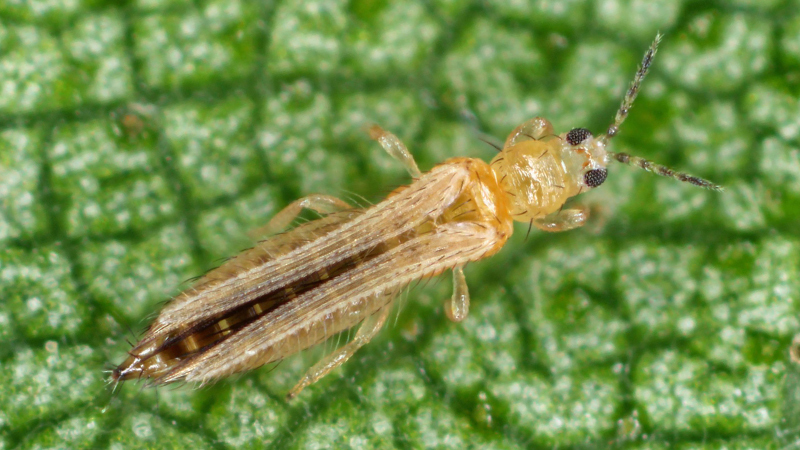Growers Face Dilemma In Managing Plant Growth
 Every season, growers face difficult choices about controlling growth in order to produce fuller, higher-quality crops. Traditional strategies have involved applying plant growth regulators (PGRs) or some type of manual pinching or trimming.
Every season, growers face difficult choices about controlling growth in order to produce fuller, higher-quality crops. Traditional strategies have involved applying plant growth regulators (PGRs) or some type of manual pinching or trimming.
The need for this kind of growth control is obvious, but there are also concerns such as cost, speed and unpredictable results.
Uncertainty Can Result In Losing Money
It’s this unpredictability that can be maddening to growers, especially when they’re trying to gear up for spring sales.
“We buy plugs from the rooting stations and put them into baskets and combos for retail,” says Kurt Wilczewski of Wilczewski Greenhouses in Howell, Mich. “I’ve talked to a lot of growers, and you can get plants from five different stations. Some may use growth regulators, and some won’t.”
The problem, says Wilczewski, is that when you put six plants in a combo basket, three may grow and the other three may not.
“If the three that don’t grow get overtaken, you’ve lost money,” he says. “I’ve wasted two months of heat, when I could have planted them right now. I won’t buy from that grower again if that’s what they’ll do.”
Wilczewski says there are some growers who don’t use PGRs, and those are the ones he chooses to buy from if at all possible.
“You get plants you know are vigorous, so you can plant them with other vigorous varieties. If there’s a growth retardant on the plants and you don’t know it,” he says. “you will ruin your combo.”
Wilczewski says he prefers to work with growers who trim their plants. Some of these growers may both trim and apply plant growth regulators, but in most of these cases he says they will provide a sheet listing which plants were treated with PGRs and which were not. That helps us know how to accurately match the plants in the combos, he says.
“You ask these guys why they put growth regulators on them, and no one can give you a good answer,” Wilczewski says. “They say it makes a better plant, but for who?”
Find A Balance Between Automation And Chemicals
Fortunately, the technology for automated trimming has improved a great deal in recent years. Companies such as AgriNomix are developing trimmers that are designed to offer more flexibility throughout the growth of the crop. Specifically, AgriNomix says trimmers can offer:
• Significant labor savings, especially when it comes to pinching poinsettias and over-the-ground mowing • More accurate crop timing, allowing growers to fine tune their growth management and respond quickly to different crop conditions
• More efficient PGR applications to avoid any uncertainty
• Easy cutting reclamation. Agrinomix’s EZ Cut Trimmers collect cuttings in a way that allows them to be reused.
Of course, the application of PGRs may still be necessary. “Last year’s outbreak of tobacco mosaic virus (TMV) on petunias is an example that no doubt had growers wondering if trimming was feasible,” says Brian Whipker, professor of floriculture in the Department of Horticultural Science at North Carolina State University. “TMV is mechanically transmitted, and with any plant where there is significant risk of disease transmission, a grower should evaluate which option is best.”
If you’re using PGRs, suppliers such as OHP will often provide tips on best practices. OHP’s “PGR Solutions” guide indicates that the best timing for PGR applications is around one week after transplanting into the finished pot. This allows the plant to set roots and overcome transplant shock. Other variables such as applying at first true leaf stage, or applying low-dose or late drenches allow growers to tailor PGR use to their needs. The younger or earlier in the crop cycle a PGR is applied, the more receptive the plant will be.
“On some plants and cultivars, a pinch or trim is the best first step to help form a well-branched plant,” Whipker says. “Then a PGR application may further help enhance secondary shoot development.”
How To Choose The Correct PGR
Brian Whipker of North Carolina State University and Joyce Latimer of Virginia Tech have collaborated on a guide to selecting and using plant growth regulators (the complete guide is available at bit.ly/1xDoKlB).
When planning PGRs in your production schedule, consider what you want to accomplish with the treatment.
• Do you want to regulate shoot growth of the plant, resulting in a sturdier, more compact plant with improved color? If so, you probably want a growth retardant.
• Do you want to increase plant branching for enhanced cutting production or for a bushier potted plant or hanging basket? If so, you probably want to use a branching agent or “chemical pincher.”
• Do you want to enhance flower initiation or synchronize flowering? If so, you probably want to use chlormequat chloride or gibberellic acid.
• Do you want to remove flowers from stock plants to increase the number of vegetative cuttings? If so, you probably want to use an ethylene-generating compound.
Answering these questions will indicate which type of PGR you need to use to accomplish your goal and the most appropriate timing of the application. Then you will need to select a specific PGR in that class and determine the appropriate dosage and application method to attain the desired response.










